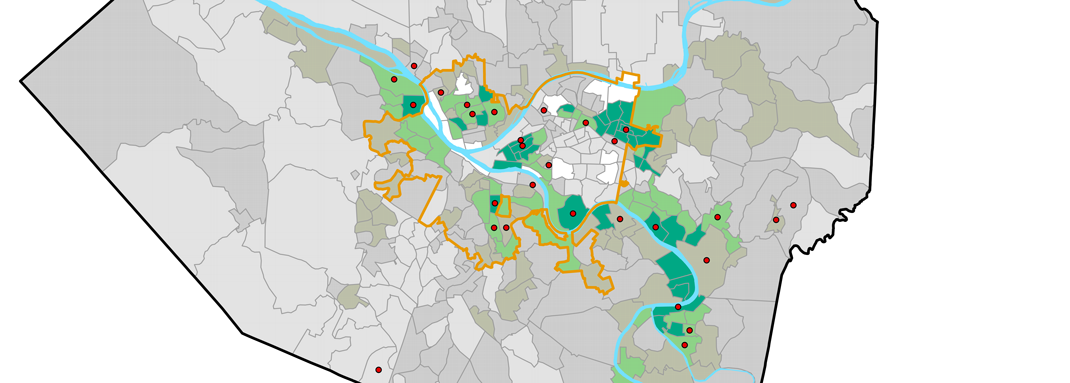We invite you to explore this page to understand how Allegheny County is using settlement funds to address the opioid epidemic.
In 2021 and 2022, states and localities reached historic settlements with manufacturers and distributors of opioids, as well as pharmacy chains and a consulting firm, for their roles in the opioid epidemic. As a result of these settlements, Allegheny County will receive annual payments in varying amounts, every December, through at least 2038.
Two major objectives guide Allegheny County’s use of opioid settlement funds:
- reducing fatal overdoses
- reducing the harms from opioid use disorder
The flexible nature of the settlement funds compared to other funding streams strengthens Allegheny County’s ability to:
- provide stability for effective existing programs, especially when other funding is uncertain or inadequate
- expand effective services and build capacity—such as covering upfront operational costs—that Medicaid or other healthcare funding does not cover
- support emerging strategies and fund innovative solutions aimed at addressing the opioid epidemic
Dashboard and Reports
The dashboard and reports—housed on this page—track the use of settlement funds and document the outcomes of the investments.
-
- 2024 Opioid Settlement Fund Report (Published 2025): describes the County’s strategy to address the opioid epidemic and the programmatic investments made with opioid settlement dollars in 2024.
- Opioid Settlement Community Listening Sessions Findings: reports the results and findings from community listening sessions held in 2024. Community priorities for opioid settlement spending included: expanding treatment access, reducing harm and stigma, improving housing stability and investing in family strengthening supports and services.
- Opioid Settlement Dashboard (2022-Present): displays an interactive dashboard that tracks Allegheny County’s spending of opioid settlement funds across different programs and priorities.
Previous:
-
- 2023 Opioid Settlement Fund Report (Published 2024): details how Allegheny County used it’s first installment of opioid settlement funds.
Key Takeaways
- Decrease in fatal overdoses: There was a 35% decline in fatal overdoses from January to August 2024 compared to the same period in 2023 (301 compared to 466).
- Decline in wastewater levels for norfentanyl and xylazine:
- The concentration of norfentanyl (a proxy for fentanyl) in wastewater dropped by more than 60% from March 2024 through the end of December 2024.
- The concentration of xylazine (a drug often used in veterinary medicine as a sedative) in wastewater levels had a sharp decline over the course of 2024, falling over 80%.
- Expansion of treatment in jail: The total count of individuals receiving any medication for opioid use disorder (MOUD) in the jail more than doubled from 2023-2024—from 889 to 1,800.
- Growth of mobile and telehealth treatment access:
- Mobile units operated by Prevention Point Pittsburgh (PPP) served 600 patients in high need communities at no cost.
- Telemedicine services offered by the UPMC Bridge Clinic—a fast turnaround MOUD prescribing service—had over 2,000 encounters in 2024, and most patients accessed medication within two hours of their telehealth visit.
- Support for community-led solutions: In 2024, Allegheny County dedicated nearly $1 million in settlement funds to support initiatives led, designed or operated by highly impacted communities.
- Investments in harm reduction strategies: In 2024, syringe services reached 700 new visitors and 3,000 returning visitors. The service program collected approximately 40 cubic feet of medical waste each month by collecting used supplies (e.g., needles, syringes) from visitors—supporting safe handling and disposal of medical waste in the community.
- Direction from the community: 2024 settlement investments reflected community input from the listening sessions—demonstrating Allegheny County’s commitment in shared decision-making.
How the County Uses this Information
Allegheny County uses the dashboard and reports to ensure it uses opioid settlement funds responsibly, equitably and effectively. Specifically, the County uses this information to:
- Monitor trends and outcomes in overdoses, treatment access and disparities across populations.
- Fill service gaps by directing funds to under-funded effective programs and by financing programs prioritized or endorsed by the community.
- Invest in evidence-based supports and services that support the improvement of current programs, the piloting of new initiatives and the design of innovative solutions.
- Drive continuous improvement efforts that strengthen partnerships and improve coordination across Allegheny County.
- Share insights and lessons learned with other communities and jurisdictions looking to pursue similar efforts.
- Strengthen public trust through advancing transparency in use of funds.
What’s Next
For 2025-2026, Allegheny County plans to use opioid settlement funds to:
- Expand access to low-barrier, high-quality, evidence-based MOUD and recovery support services.
- Continue to support treatment in the Allegheny County Jail, including continuity of care post-release.
- Increase services in highly impacted communities—improving mobile units for MOUD distribution and wound care, strengthening harm reduction services and enhancing targeted interventions for people at highest risk.
- Upgrade supportive housing by investing in recovery housing and permanent supportive housing for people with opioid use disorder.
Allegheny County has also issued a funding opportunity called the Open Solicitation for Programs that Prevent or Treat Opioid Addiction Under the Guidelines of the Opioid Settlement Fund. Through this Request for Proposals (RFP), Allegheny County seeks additional ideas from the community on how to improve outcomes for groups disproportionately or hardest impacted by the opioid epidemic, particularly the Black community, people who are currently or recently incarcerated, individuals experiencing homelessness, people who inject drugs, and people with chronic pain or disabilities.
Questions or Feedback?
We welcome your questions and suggestions. To share feedback, you can reach us at DHSResearch@alleghenycounty.us. If you’d like to stay informed, consider signing up for our newsletter. To learn how to use DHS data in your research, please visit our Requesting Data page. Thank you for your time and interest. Your engagement helps shape and improve how we share data that matters.













